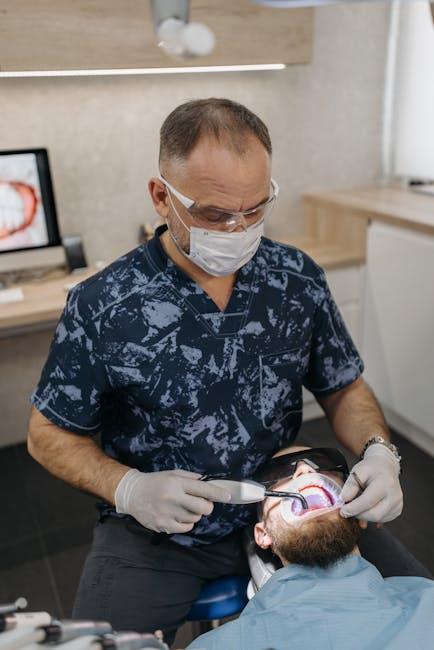
Dental Insurance Market Size & Outlook, 2025-2033 – UnivDatos
The dental insurance market is experiencing robust growth driven by increasing awareness of oral health, rising disposable incomes, and expanded insurance coverage across different regions. According to UnivDatos Market Insights, the dental insurance market size is poised for significant expansion from 2025 to 2033, reflecting shifting consumer behaviors and evolving healthcare policies. In this article, we’ll dive deep into the market dynamics, growth drivers, challenges, and future outlook backed by comprehensive data and expert analysis.
Introduction to Dental Insurance Market
Dental insurance provides coverage for preventive, diagnostic, and restorative dental care costs. With oral health directly impacting overall health and wellbeing, more consumers are seeking dental insurance plans that offer customized coverage. Alongside, employers and governments increasingly emphasize dental benefits to improve population health.
The market spans various segments including individual and group insurance, government-sponsored programs, and private dental plans. Technological advancements, tele-dentistry, and greater integration with health insurance packages further accelerate market adaptation.
Dental Insurance Market Size: 2025-2033
UnivDatos research projects the global dental insurance market to witness a compound annual growth rate (CAGR) of approximately 7.5% during 2025-2033. As of 2025, the estimated valuation stands at USD 25 billion, expanding to over USD 45 billion by 2033.
| Year | Market Size (USD Billion) | Growth Rate (CAGR %) |
|---|---|---|
| 2025 | 25 | 7.5% |
| 2027 | 30.2 | |
| 2029 | 36.5 | |
| 2031 | 41.4 | |
| 2033 | 45.1 |
Key Drivers Fueling the Dental Insurance Market Expansion
- Increasing Oral Health Awareness: Rising education and awareness campaigns highlight early dental care, boosting demand for insurance coverage.
- Government and Employer Initiatives: Expanded dental coverage in public health programs and employee benefits fosters broader market growth.
- Technological Innovations: Tele-dentistry and AI diagnostic tools improve patient accessibility and reduce costs.
- Rising Disposable Income: Growing middle class in regions like Asia-Pacific fuels accessibility to premium dental insurance plans.
- Integration with Health Insurance: Bundled insurance packages encourage consumers to choose combined health and dental plans.
Market Segmentation Overview
Understanding the dental insurance market segmentation helps stakeholders target the right customers and optimize product offerings.
By Plan Type
- Indemnity Plans: Traditional fee-for-service coverage allowing freedom of choice in dentists.
- Preferred Provider Organization (PPO): Network-based plans offering lower costs with in-network providers.
- Dental Health Maintenance Organization (DHMO): Plans requiring use of specific providers for tight cost control.
- Discount Dental Plans: Membership-based discount savings on dental procedures.
By End-User
- Individual Dental Insurance: Plans purchased directly by customers for personal coverage.
- Group Dental Insurance: Employer-sponsored or government programs covering large populations.
By Region
- North America: Largest market share driven by high oral health expenditure and insurance penetration.
- Europe: Mature market with stable growth supported by comprehensive public healthcare.
- Asia-Pacific: Fastest-growing region due to rising income and awareness.
- Latin America & Middle East & Africa: Emerging markets with untapped potential.
Challenges and Restraints
Despite promising growth, the dental insurance market faces several challenges:
- High Premium Costs: Some consumers avoid dental insurance due to cost concerns.
- Limited Awareness in Developing Regions: Lack of education slows adoption rates.
- Complexity in Plan Coverage: Policy variations often confuse prospective customers.
- Reimbursement Delays: Slow claim settlement can affect customer retention.
Benefits of Dental Insurance
Having dental insurance offers multiple advantages to consumers, enhancing both oral and overall health:
- Cost Savings: Covers routine check-ups, cleanings, and reduces out-of-pocket expenses for dental treatments.
- Preventive Care Emphasis: Encourages regular dental visits, reducing risks of major dental issues.
- Access to Quality Care: Facilitates access to a broader network of dentists and specialists.
- Financial Protection: Limits unexpected expenses from emergency dental procedures.
Practical Tips for Choosing Dental Insurance
Picking the right dental insurance plan can be overwhelming. Here are some practical tips to guide your decision:
- Review the coverage details including preventive, basic, and major dental services.
- Check if your preferred dentist is in-network to maximize benefits.
- Compare premiums, deductibles, and co-payments for overall affordability.
- Understand the waiting periods and exclusions to avoid surprises.
- Consider family plans if dental coverage is needed for dependents.
Case Study: Impact of Dental Insurance in North America
In North America, expanding employer-sponsored dental insurance has notably improved oral health outcomes. A study covering 10,000 insured individuals showed:
- 37% increase in routine dental visits over five years.
- 25% reduction in emergency dental treatments due to early intervention.
- Improved patient satisfaction with dental care access and affordability.
This highlights how strategic dental insurance programs enhance public health and reduce long-term costs.
Dental Insurance Market Outlook: What to Expect by 2033
Looking ahead, the dental insurance market is expected to become more consumer-centric, technology-driven, and integrated with overall healthcare systems. Key trends include:
- Digital Transformation: AI and tele-dentistry will simplify claim processing and improve patient engagement.
- Customization: Personalized insurance plans tailored to individual oral health needs.
- Emerging Market Expansion: Greater penetration in Asia-Pacific and Latin American regions.
- Regulatory Support: Increased government initiatives to promote oral health insurance.
Conclusion
The dental insurance market is on a promising growth trajectory from 2025 through 2033, driven by rising oral health awareness, technological innovation, and expanded coverage globally. According to UnivDatos, stakeholders should seize the opportunity to innovate insurance offerings and address regional challenges to unlock this market’s full potential. Consumers keen on maintaining healthy smiles and minimizing dental costs will find dental insurance increasingly indispensable.
By understanding market sizing, trends, and practical decision-making approaches, you can optimally navigate this evolving landscape toward better oral healthcare outcomes.


